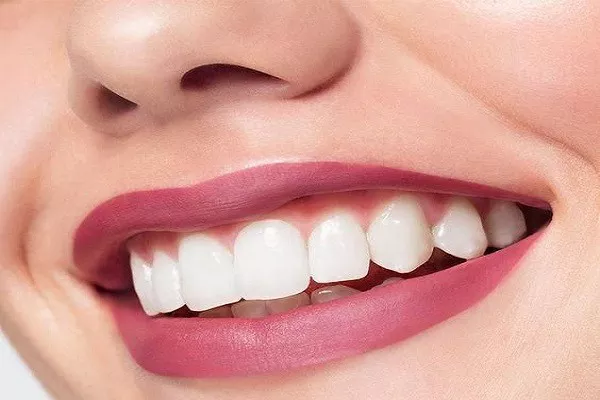Teeth whitening strips have become increasingly popular as a convenient and affordable way to brighten your smile. However, when using these strips, it’s important to understand the proper guidelines for eating afterward. This article will discuss the recommended waiting times after using teeth whitening strips before you can safely consume food and beverages. We’ll also explore the science behind teeth whitening, potential side effects, and tips to maintain your newly whitened smile.
Understanding Teeth Whitening Mechanisms
Before delving into the post-whitening eating timeline, let’s briefly explore how teeth whitening strips work. Most teeth whitening strips utilize hydrogen peroxide or carbamide peroxide as the active bleaching agent. These compounds penetrate the enamel to break down deep stains and discoloration, resulting in a brighter appearance.
When the whitening strips come into contact with your teeth, they release oxygen ions that target and oxidize colored molecules within the tooth structure. Over time, this process breaks down the pigments responsible for staining, revealing a whiter smile.
Immediate Post-Whitening Guidelines
After using teeth whitening strips, it’s crucial to follow specific guidelines to maximize results and minimize potential adverse effects. Here are some immediate post-whitening recommendations:
Remove the Whitening Strips: Once the recommended duration for wearing the strips is complete, remove them carefully and dispose of them properly.
Rinse Your Mouth: Gently rinse your mouth with water to remove any residual gel or debris left from the whitening strips. This step helps ensure you don’t inadvertently swallow any excess bleaching agent.
Wait Before Eating or Drinking: To allow the whitening process to fully take effect, it’s advisable to wait at least 30 minutes before consuming anything, including food, beverages, and smoking. This waiting period allows the active ingredients to settle and ensures optimal results.
Avoid Staining Agents: During the immediate post-whitening phase, steer clear of foods and beverages known to stain teeth, such as coffee, tea, red wine, berries, soy sauce, and dark-colored sodas. These items can counteract the whitening effects and compromise your desired outcome.
Recommended Waiting Times for Eating After Using Teeth Whitening Strips
While waiting 30 minutes after removing the whitening strips is a good starting point, the ideal waiting time can vary depending on the specific product and its concentration of bleaching agents. Here are some general guidelines:
Low Concentration Strips: For whitening strips with lower concentrations of hydrogen peroxide (less than 10%), waiting 30 minutes should suffice before eating or drinking.
Moderate Concentration Strips: If you’ve used strips with moderate concentrations of hydrogen peroxide (between 10% and 20%), it’s recommended to wait at least one hour before consuming food or beverages.
High Concentration Strips: Stronger strips containing higher levels of hydrogen peroxide (above 20%) may necessitate waiting up to two hours before eating. This extended waiting period allows the whitening process to reach its full potential.
It’s essential to carefully read the instructions provided with your specific brand and consult your dentist if you have any concerns or questions about the waiting time.
Maintaining Your Newly Whitened Smile
Achieving a radiant smile doesn’t stop at using teeth whitening strips. To maintain your results and keep your teeth healthy, consider incorporating these tips into your oral hygiene routine:
Practice Good Oral Hygiene: Brush your teeth at least twice a day using a soft-bristled toothbrush and fluoride toothpaste. Additionally, floss daily to remove plaque and prevent staining between your teeth.
Limit Consumption of Staining Agents: While coffee, tea, and red wine are common culprits for tooth staining, other foods like curry, tomato sauce, and balsamic vinegar can also contribute to discoloration. Minimize your intake of these staining agents or rinse your mouth with water after consuming them.
Use a Straw: When drinking beverages known to stain teeth, consider sipping through a straw to minimize contact with the front surfaces of your teeth.
Regular Dental Check-ups: Schedule routine dental visits for professional cleanings and check-ups. Your dentist can monitor your oral health, provide personalized advice, and recommend touch-up treatments if necessary.
Potential Side Effects of Teeth Whitening Strips
While teeth whitening strips are generally safe when used correctly, some individuals may experience temporary side effects. These can include tooth sensitivity, gum irritation, or mild discomfort. These symptoms typically subside within a few days after completing the whitening treatment.
If you experience persistent or severe side effects, it’s important to consult your dentist for further evaluation and guidance.
Conclusion
Teeth whitening strips can be an effective way to enhance your smile, but proper post-treatment care is essential. Waiting at least 30 minutes after using the strips before eating or drinking allows the active ingredients to settle and encourages optimal results. Remember to follow the specific instructions provided by the manufacturer, and consult your dentist for personalized advice. By maintaining good oral hygiene practices and minimizing exposure to staining agents, you can enjoy a long-lasting, brighter smile.



























